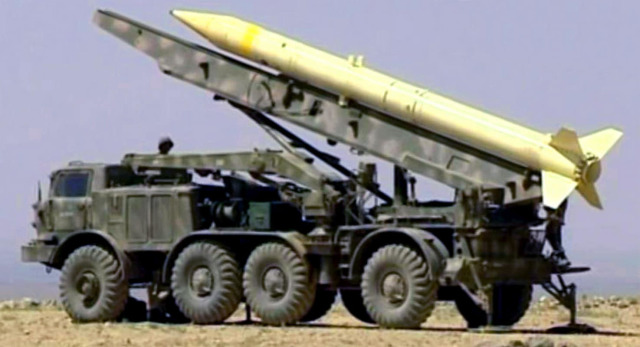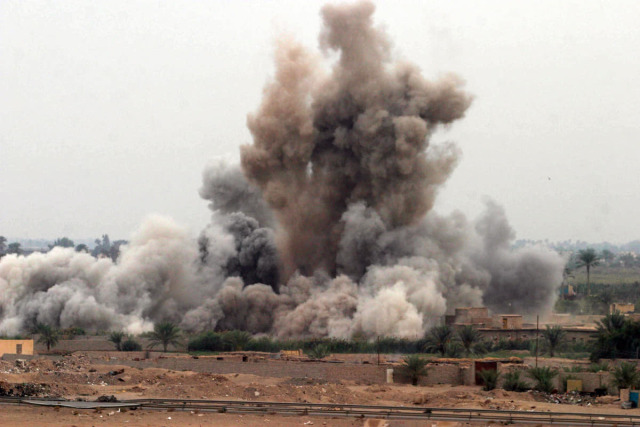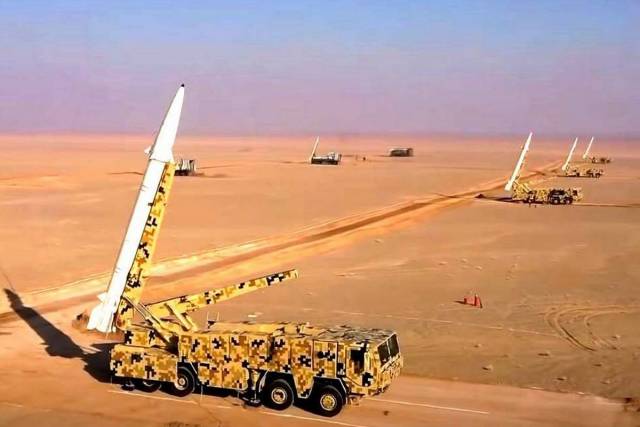Since the Iran-Iraq War of 1980-88, when Iranian cities suffered from Iraqi missile attacks, the military and political leadership of the Islamic Republic of Iran (IRI) considers ballistic missiles as a vital tool of self-defense. Having no modern air force, Iran considers BR, as well as cruise missiles (KR) and unmanned aerial vehicles (UAVs) to be the main means of balancing forces.
According to the International Institute for Strategic Studies (IISS), today Iran's missile arsenal is the largest and most diverse in the region, which reflects the priorities that Tehran attaches to these systems. According to IISS publications, as of 2021, Iran had 6-8 types of liquid propellants and up to 11 solid fuel systems (depending on the calculation method). The Armed Forces of the country and the Islamic Revolutionary Guards Corps (IRGC) have deployed up to 100 mobile launchers for short-range BR (BRMD), about 50 launchers for medium-range BR (BRSD) and more than 1,000 missiles of both classes themselves.
The modern missile strategy of Iran is determined by the lessons learned from the war with Iraq. Then, less than 20 days after the start of hostilities, Iraq demonstrated its military might by striking the city of Dizful with a FROG 7 tactical missile of the 9K52 Luna-M complex. As a result of the attack, 70 Iranians were killed. Over the next three years, the territory of Iran was subjected to missile strikes about 1,700 times.

FROG 7 ballistic missile (9K52 Luna-M)Since at that time Iran was not armed with similar weapons of destruction, in 1984 a group of Iranian officers under the leadership of the future founder of the Iranian missile program Hassan Tehrani Moghaddam (Hassan Tehrani Moghaddam) went to Syria to teach methods of preparing and launching missiles.
Syria turned out to be the only country ready to cooperate with Iran in this area. At the same time, 8 Scud missiles were purchased in Libya, which were delivered to Iran along with two launch platforms and maintenance crews from Libya. After Baghdad resumed the "war of cities" in February 1985, Tehran responded with the first Iranian missile that hit the Kirkuk oil refinery on March 12, 1985. The subsequent rocket attacks on the military and economic centers of Iraq forced Saddam Hussein to agree to a missile cease-fire (albeit temporary) and stop the "war of cities". The Iran-Iraq War shaped the generation that continues to lead Iran today.
Iran's perception of the threat determines its strategy. If in the 1980s the main Arab opponent was a better-armed Iraq, today it is more equipped Saudi Arabia (possibly changing relations with the KSA), Israel and the United States. To protect itself from these adversaries, Tehran relies on a strategy of "deterrence through punishment", which aims to make any enemy attack unprofitable. Proxy wars, "mosquito forces" at sea and ballistic missiles are used to achieve the goal. Asymmetric measures are seen as the only way to deter and protect Iran from the overwhelming military might of the United States and its allies. Western sanctions, which after the 1979 revolution deprived the republic of the possibility of developing a Shah-era air force, increased dependence on missiles for deterrence and protection.
According to IISS estimates, Tehran believes that the Iranian missile program has achieved its deterrence goals. Referring to the "imperialist power of the United States and the Zionist regime," Iran's Supreme Leader Ayatollah Ali Khamenei said on June 4, 2019: "In the defense sector, we have largely achieved deterrence. That's why they [the US and Israel] insist on a missile program and the like. They know that we have achieved containment, that we have achieved stability. They want to take it away from the country."
According to American experts, the lifting of the UN ban on the sale of conventional weapons to Iran in October 2020 is unlikely to change its defense doctrine, at least in the near future. Iran will seek to fill in the gaps in the capabilities of its air defense system and air force. However, the continued bans on arms supplies by the US and the EU and the caution of potential sellers due to possible US sanctions will limit Iran's ability to acquire new aircraft. Consequently, Tehran's dependence on missiles will remain.
At the same time, it is noted that Iran's missile doctrine is undergoing important changes. In the last decade, priority has been given to improving accuracy, rather than increasing the range exceeding 2000 km. A doctrine based solely on punishing potential attackers by striking cities and other important targets is being transformed into a strategy also aimed at depriving potential opponents of their military capabilities.
Thus, high-precision multiple launch rocket systems and BMD can deprive the enemy of access to territories along the borders of Iran and increase the cost of concentrating forces nearby. Short- and medium-range missiles are capable of threatening ships in the waters of the Persian Gulf and ports serving the navies of both the Arab States of the Persian Gulf and external powers. Ballistic missiles delivering precise strikes on airfields can seriously disrupt the rate of generation of sorties, which is vital for the strategies of the United States and its Arab allies. Sufficiently accurate missiles to limit collateral damage or avoid it can be used to strike key military and civilian infrastructure facilities with less risk of an international response.

Iran's strike on the US Air Force in IraqThe increased accuracy of missiles and the use of relatively inexpensive UAVs give Iran new offensive capabilities, which also strengthen its deterrent position.
In June 2017, Iran fired seven Zulfikar missiles at the Islamic State (IS – banned in Russia) in Syria. Despite the fact that, allegedly, only two missiles hit the intended target area, Iran has demonstrated an impressive ability to use reconnaissance UAVs to collect and transmit information about the target and provide real-time damage estimates to calculations hundreds of kilometers away.
In September 2019, what were allegedly Iranian missiles and UAVs attacked oil facilities in Abqaiq, temporarily halving oil production in Saudi Arabia. After the US assassination of the commander of the IRGC's Al-Quds forces, General Qasem Suleimani, in January 2020, Tehran responded with missile strikes on two Iraqi bases where US and coalition troops were stationed. Noting that there is no certainty that the buildings hit at the Ain al-Assad and Erbil bases were Iran's aiming points, experts have no doubt that the accuracy of Iran's missiles has increased significantly over the past decade.
To be continued…
Based on the materials of the resources: iiss.org, missilethreat.csis.org, iranprimer.usip.org

